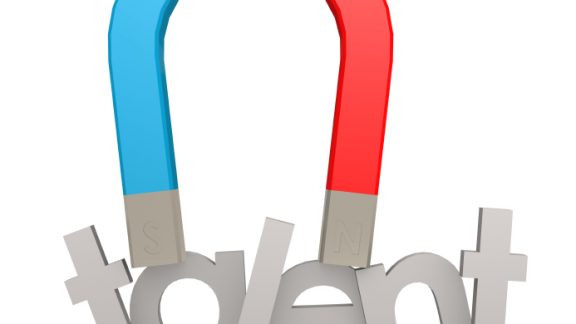When CIOs adopt leading technologies like self–service provisioning, software defined networks, cloud native applications, and mobile solutions, they’re typically motivated by the significant business efficiencies and agility that these new technologies can deliver.
Those are essential considerations, of course, but I’m going explore another, often overlooked, reason to upgrade to IT’s cutting edge: that the technology you deploy for internal use plays a major role in attracting – and retaining – talented staff that will transform your business to a digital enterprise.
You’re only as good as your talent, after all, and anything that frustrates them or otherwise drives your employees – especially the best ones – to think about jumping ship, is a problem you need to deal with.
Attracting Millennials
 This problem is becoming more urgent as Millennials join the workforce. Young people joining the workforce today have expectations of mobility, interoperability, ease of use, speed of technology upgrades, the consumerization of IT and more based on their experience with technology since grade school. With next year’s new hires, those expectations will only increase.
This problem is becoming more urgent as Millennials join the workforce. Young people joining the workforce today have expectations of mobility, interoperability, ease of use, speed of technology upgrades, the consumerization of IT and more based on their experience with technology since grade school. With next year’s new hires, those expectations will only increase.
This has an even greater impact on companies that are making serious investments in customer-facing technology. I’ve heard young employees at a well known IT enterprise, for example, say, “I can’t believe I work for a tech company and I can’t get everything on my phone and that the applications are so slow and so hard to maneuver.”
I’ll write more about how Millennials are changing IT in my next post, but here I’ll just add that young people who arrive at companies with outdated internal IT are going to be looking to leave as soon as possible, bringing all the associated costs and delays that come with having to replace people who were performing well.
Retaining Top Talent
Of course, attracting and retaining talent isn’t just about your newest hires. I’ve also seen highly experienced employees motivated to move because they’re asked to work with outdated systems, processes, and tools. These employees know how much better they could be performing with better technologies at their disposal and are simply frustrated at dealing with antiquated infrastructure, manual processes, paper-based systems, and having to constantly put out fires instead of focusing on innovation.
This was made even more apparent to me when I worked with a large pharma company that spun off one of their divisions with a new greenfield approach to internal IT (but no real difference in their customer-facing business). They advertised jobs in the spin-off internally, and a large number of their best people jumped at the chance, leaving the parent company badly lacking in experience.
Ambitious IT professionals can be even harder to keep. Those individuals take it on themselves to keep learning and pick up the very latest skills. If their company isn’t supporting their personal development because it has no ambition to deploy those technologies, employees will take that as a signal that they should be working elsewhere.
There’s one further cost to holding back on new technologies that future-oriented employees – of whatever age – are keen to use. If you finally spend money on new technology after the best of them have left, you’ll be short of the skills to make full use of the capabilities you’ve invested. And in the age of the fully-digital enterprise when IT is no longer simply a support function, you’ll be failing to get maximum benefit from an essential competitive differentiator.
How Do You Stay Ahead? (Spoiler: It’s not all about technology!)
Clearly, this adds weight to any efforts you have underway to advance your internal systems. It bolsters the case for investing in flexible, virtualized work environments that are mobile-friendly and device agnostic. As you free employees to work from anywhere and on any device, and on modern systems that are fast, adaptable, and efficient, you will set yourself apart in the marketplace for talent. Existing employees will view your company more positively – meaning they’ll be far less likely to look elsewhere and that you’ll get a reputation among talented, forward-looking people in your sector as the place work.
But investing in internal IT for talent retention isn’t just about the technology. People and process are crucial considerations, too.
Your best staff will know about and want to use the latest solutions, but they can’t be expected to make maximum use of them without training and support. So when you do update your IT, you need to be sure that employees are supported in the transition and that your organization is prepared to shift its operating model to fully exploit the systems you are putting in place. And you need to be ready to get help to do that if needed.
In addition, empower your tech staff to help guide the technology roadmap you create. It helps build the sense of ownership that will keep them attached to the organization, but it’s also smart management. These people have experience, knowledge of the business, and proven ambition. You’re always going to build a better system if you include them in your planning than you would if you present them with a plan that’s already a done deal.
========
Mark Sterner brings over 14 years of experience in IT Service Management. He has worked in both the process development and ITIL implementation areas for large IT organizations. Mark is currently a Transformation Consultant at VMware, Inc.





